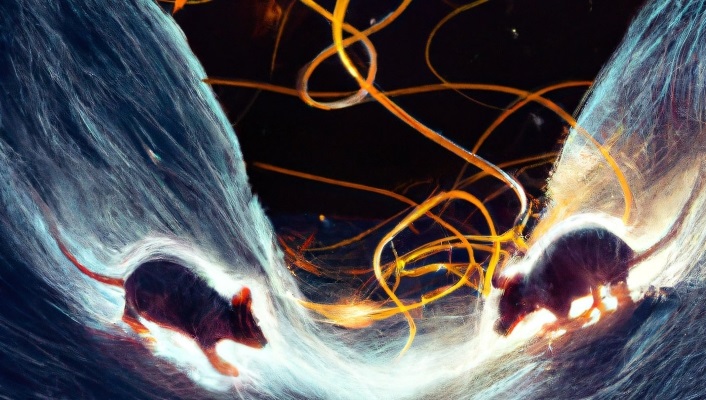Education
A Theory of Rage

Have you ever been cut off while driving and found yourself swearing and laying on the horn? Or come home from a long day at work and lashed out at whoever left the dishes unwashed? From petty anger to the devastating violence we see in the news, acts of aggression can be difficult to comprehend. Research has yielded puzzling paradoxes about how rage works in the brain. But a new study from Caltech, pioneering a machine-learning research technique in the hypothalamus, reveals unexpected answers on the nature of aggression.
The hypothalamus is a brain region linked to many innate survival behaviors like mating, hunting, and the fight-or-flight response. Scientists have long believed that neurons in the hypothalamus are functionally specific—that is, certain groups of neurons correlate to certain specific behaviors. This seems to be the case in mating behavior, where neuron groups in the medial preoptic area (MPOA) of the hypothalamus, when stimulated, cause a male mouse to mount a female mouse. These same neurons are active when mounting behavior occurs naturally. The logical conclusion is that these neurons control mounting in mice.
But when looking at the analogous neurons that control aggression in another part of the hypothalamus, the VMHvl, researchers found a different story. These neurons could be stimulated to cause a male mouse to attack another male mouse, yet they did not show specific activity when the same neurons were observed in naturally fighting mice. This paradox indicated that something distinct was happening when it came to aggression.
Now, a new Caltech study provides insight into the unique neural mechanisms of anger and shows that more aggressive dispositions are codified in the mouse brain’s circuit dynamics. The research appears in the journal Cell on January 5 and was conducted in the laboratory of David Anderson, the Seymour Benzer Professor of Biology, Tianqiao and Chrissy Chen Institute for Neuroscience Leadership Chair, a Howard Hughes Medical Institute Investigator, and director of the Tianqiao and Chrissy Chen Institute for Neuroscience. The study is part of a continuing collaboration with Ann Kennedy, a theoretical neuroscientist and former postdoctoral fellow in the Anderson lab, now an assistant professor of neuroscience at Northwestern University.
The study’s lead author, Caltech graduate student Aditya Nair, applied a machine-learning model to analyze experimental data and uncover hidden patterns in brain activity.
“We used machine learning to fit a dynamical system model to recorded neural data from mice,” Nair says. “Essentially, the dynamical system acts like an artificial mouse brain in a computer which reflects our experimental observations. We then studied this model in depth to learn how these hundreds of neurons talk to one another. By applying dimensional reduction and other analysis techniques from physics, we were able to finally see the neural signals and computations causing aggression.”
The analysis revealed a “line attractor” in the brain—a mathematical representation of a pattern that emerges from complex neural systems. When graphed in an energy landscape, the line attractor forms the shape of a trough. Though the trough is not a physical structure in the brain, it indicates the flow of energy happening in the dynamical system.
-
Auto2 years ago
Honda Marine Debuts All-New BF350 Outboard Company’s First V8 Motor Available Commercially, Flagship Model Offers Premium Power and Unparalleled Performance for Extraordinary Boating Experiences
-
Auto2 years ago
New Features Further Increase Desirability Of Bentayga Range
-
Technology2 years ago
Oracle Partners with TELMEX-Triara to Become the Only Hyperscaler with Two Cloud Regions in Mexico
-
Auto2 years ago
Honda and Acura Electric Vehicles Will Have Access to Largest EV Charging Networks in North America Aided by New Agreements with EVgo and Electrify America
-
Lifestyle2 years ago
2023 Nike World Basketball Festival Brings the Best of Basketball Style, Culture and Community